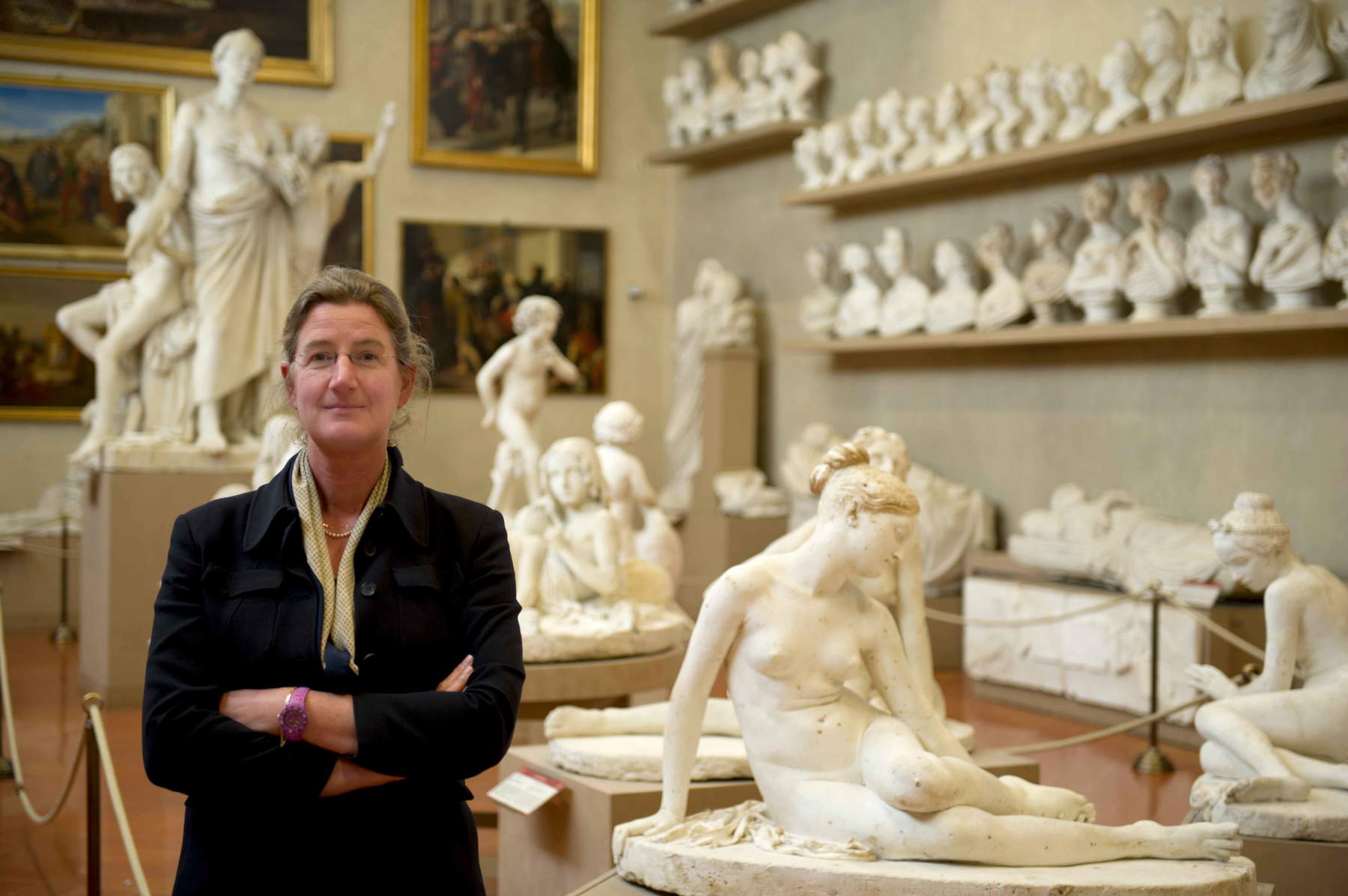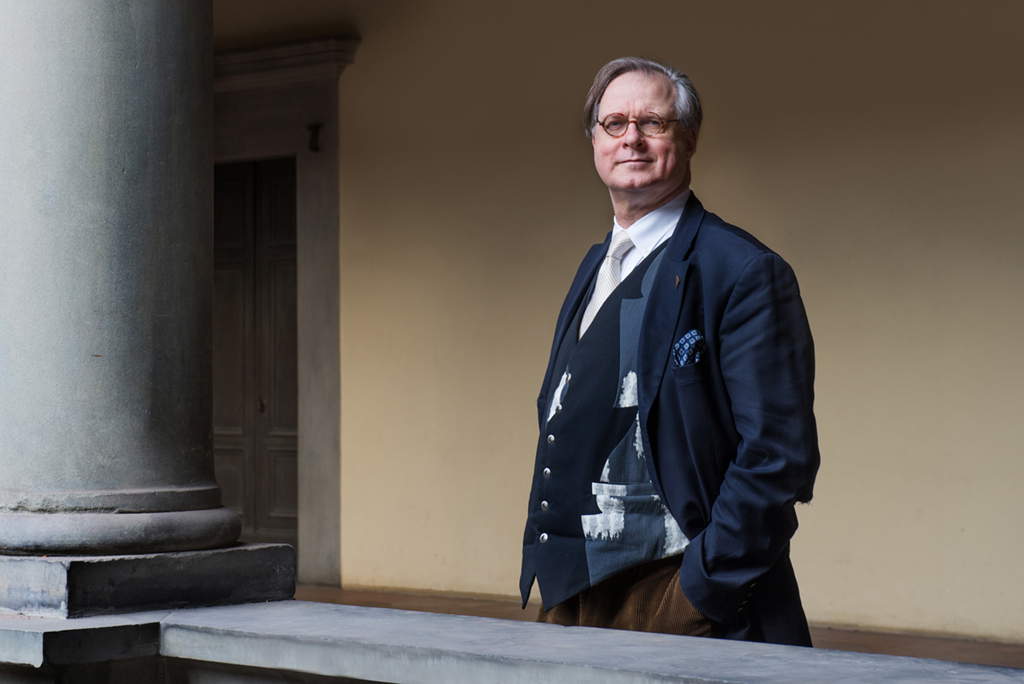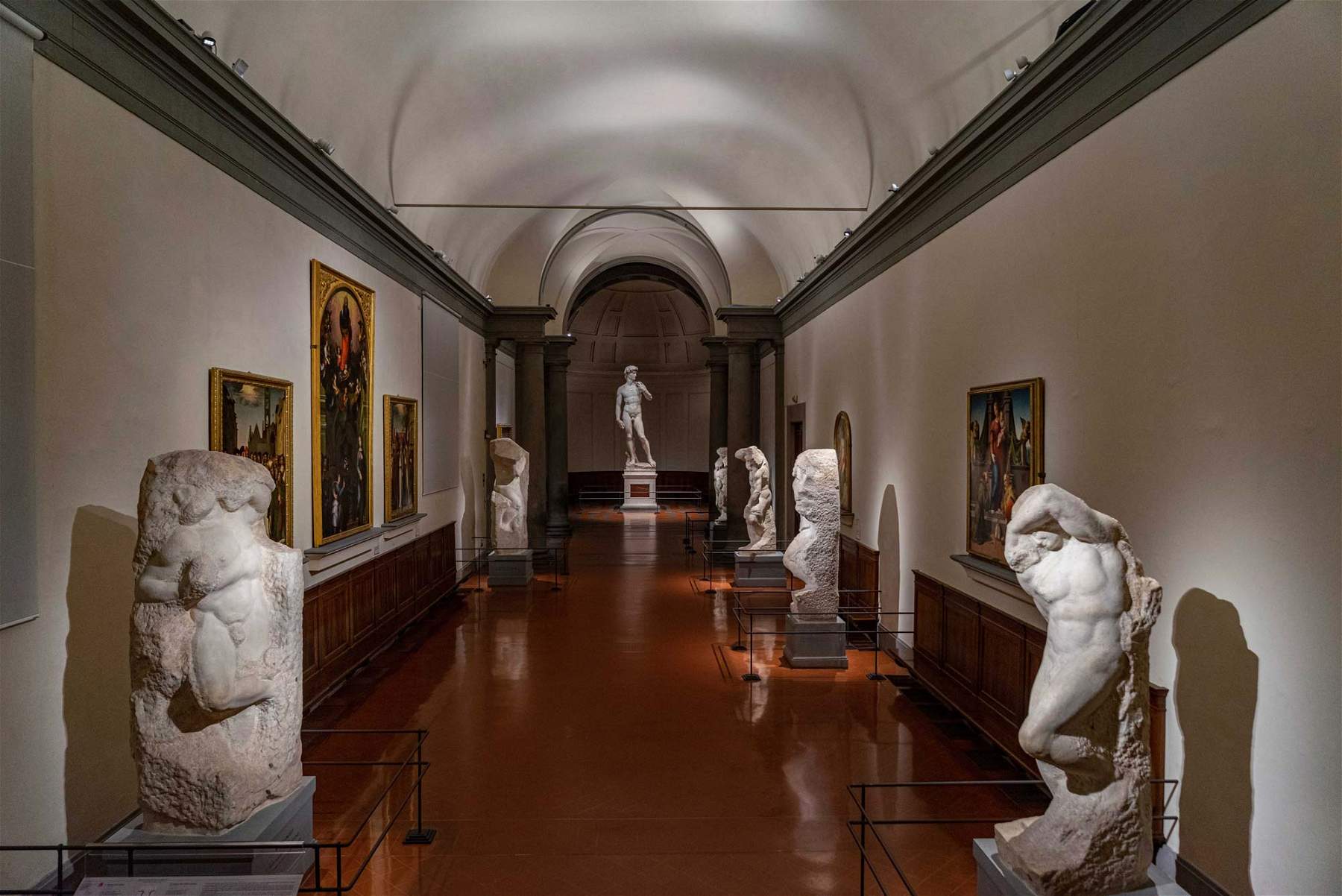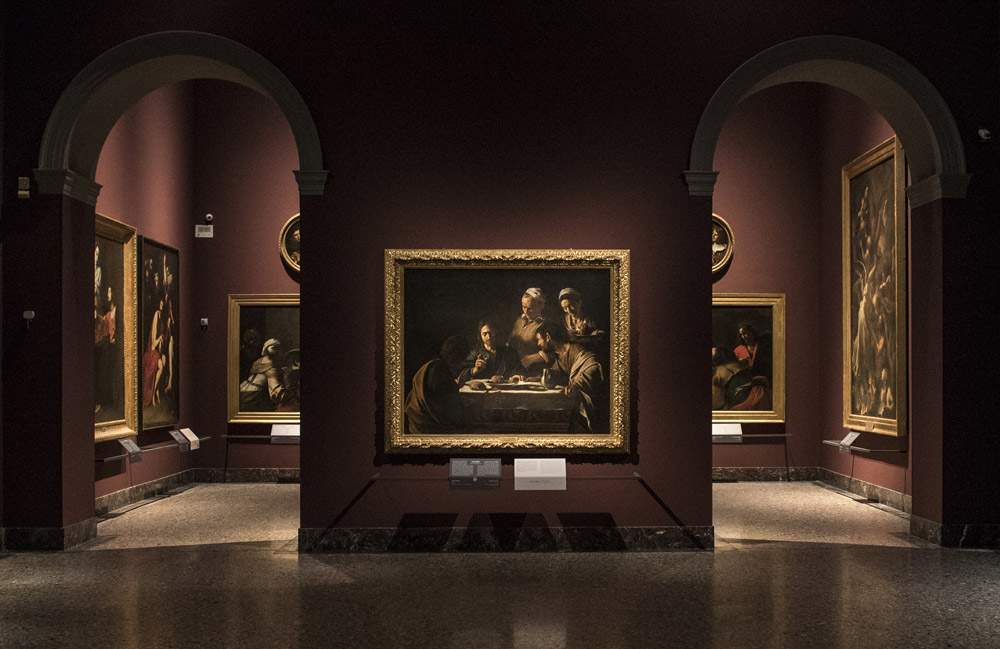Inquiry into museum reform, part 1. Cecilie Hollberg and James Bradburne speak
“Human resource management is the biggest weakness of the reform,” per James Bradburne. “The director of an autonomous museum is a ’pseudo-employer’ who, however, does not make decisions”: who is convinced of this is Cecilie Hollberg. With the double interview with, respectively, the director of the Pinacoteca di Brera in Milan and the director of the Galleria dell’Accademia in Florence, kicks off the installment investigation that Finestre Sull’Arte has decided to devote to autonomous museums almost ten years after the first Franceschini Reform. While it seems that the only appreciable distinction between first-tier museums (the Pinacoteca) and second-tier museums (the Galleria) consists in the different, significant, economic treatment of their respective directors, both interviewees agree on the need for autonomous management of staffing as well, and not only of financial resources, as is currently the case. Opinions diverged on other fronts: for Bradburne, the further recognition of these “special” museums with legal personality would be the key to the breakthrough, while it would be a disadvantage, on the other hand, for Hollberg; flawed for the former is the governance structure, valid on the other hand for the latter, who, however, raises the alarm over the failure to reappoint the Board of Auditors, which risks paralyzing the museum. Concerns that had accompanied the start of the Reform about the risk that enhancement activities might take precedence over those inherent in protection seem dispelled, at least for these first two cases, by the attention paid by both directors to the second. Also, commitment on the city community retention front. But if Bradburne explains under what conditions one can talk about free museums, Hollberg is skeptical. In closing, the latter does not feel like giving a grade to her autonomy experience, while the British museologist assigns a resounding insufficiency.



There are two different degrees of autonomy: general and non-general management level museums. What does it entail that the former are “functionally”dependent on the General Directorate and the latter are subject to the powers of direction, coordination and control of the Museums Directorate?
James Bradburne. In fact, the Pinacoteca is one of eleven museums that reports directly to the MiC Secretary General, and it is at the same level as the General Directorate of Museums, which gives it a greater degree of autonomy than other museums, such as those in Modena or the Bargello. There are some decisions that have to be coordinated with the DG Museums, but generally these are information and not approvals, so in most operational matters we are actually autonomous in terms of how we use our budget and our strategy. Unfortunately, 2014 never provided autonomy in HR management, which is the biggest weakness of the reform.
Cecilie Hollberg. The key difference is that the directors of the former-which earn twice as much-are directly answerable to the minister, through the Secretary General, while the latter, which includes the Accademia Gallery in Florence, are answerable to the Director General of Museums. First, one must ask why there are these distinctions among museums. There is no understandable rationale explaining the criteria for which these two bands were established. The Accademia Gallery in Florence for example steadily occupies the second position among the most visited museums in Italy, and we have always counted the highest number of visitors per square meter. If it proceeds as started, in 2023 we will greatly exceed the number of visitors in 2019. The Accademia Gallery in addition to this occupies a very exposed position. We have income that is envied by many.
The Ministry remains to various degrees involved in the decision-making process. In your opinion, would it be appropriate or on the contrary deleterious to take a further step by recognizing legal personality to these “special” institutes?
JB. The key to unlocking the enormous potential of the country’s great museums is the granting of complete autonomy both economically and in terms of human resources, which could be achieved by recognizing them as a “legal personality.” The move to foundation status is only one of many possibilities, and certainly autonomy could be achieved in other ways. The important thing is to have the ability to manage both economic and human resources, reporting to an autonomous and independent board of directors.
CH. Honestly, we already have all the disadvantages of legal personality. My museum’s Fire Prevention Certificate (FIPC) for example had expired 11 years before I arrived, but I had to pay the fine myself. I speak for the museum I direct: being able to manage staff independently would be essential; it would mean not having to wait for a central competition. I could finally acquire the indispensable professionals. A museum does not correspond to a ministry, and there are specific professionals not considered so far, such as a registrar or a curator of musical instruments. Moreover, the Academy Gallery would be one of the few, if not the only museum perhaps, able to self-finance itself to pay staff salaries. Of course, not all autonomous institutions are able to do this, and I understand that it is not easy to find the solution at the national level. Here, this would be diversification on an objective basis.
Even the allocation of staffing is attested to the central administration, which provides (or should provide) for professional figures. Is the museum director understaffed? Would it be preferable for the director to designate “human capital,” with adequate and specific training, according to the technical-operational needs he or she has? Would financial autonomy go as far as covering salaries as well?
JB. See above. Every museum is different and needs different professional profiles. The issue of being “understaffed” refers only to the staffing currently established by the central ministry, which is outdated and not adequate to the real needs of the different institutions. True autonomy would mean that each institution could come up with the staffing level suited to its local characteristics, mission, and strategy. Only then would it be possible to assess whether the museum is over- or under-staffed.
CH. I echo what has already been explained. The director of an autonomous museum is a “pseudo-employer” who, however, does not decide. Regarding staffing we have been understaffed since 2015 up to 40-50%. Thanks to the Ales staff-young, very good, very expensive for us, little comes to them-we manage the day-to-day. Fundamental help for events comes to us from the Association of Friends of the Academy Gallery, which pays overtime on a contract basis. As for professional figures, consider that an administrative officer and a restorer were assigned to us only three years after autonomy was recognized. And also in 2018, the arrival of an institutional architect finally allowed us to start fundamental work on securing and improving the functionality of the building. With my colleague Paola D’Agostino of the Bargello Museums, we have supported each other all these years where we could.
How does the Museum participate in the Financial Rebalancing Fund among state institutes and places of culture?
JB. Having always had good revenues (though not as robust as those of the Uffizi or the Colosseum) we have always contributed to the Financial Rebalancing Fund among state institutes and places of culture.
CH. The Gallery regularly contributes 20 percent of its income from ticketing to the Fund. Redistribution to the economically “weaker” institutions is rightly taken care of by the General Directorate.
One of the main changes introduced for autonomous museums is their governance. Doesthe organization-director-committee-scientific committee , auditors-function at themanagement level, not theoretically, but precisely in practice? How often do you convene the scientific committee? In an interview, then-Director General Antonio Lampis observed that the members of these bodies often instead of “supporting the director often ’paralyze’ his activity by personalism.” If you agree with this observation, what could be the alternative?
JB. The structure proposed by the reforms is more or less the correct one: a Director General reporting to a Board of Directors on all legal, financial and strategic matters, with a Scientific Advisory Committee aimed at ensuring that the museum’s strategy is consistent and of high quality. In reality, the implementation is flawed in several respects: first, the DG is also the chairman of the Board of Directors, which means that his ability to exercise restraint is limited; second, the DG is also chairman of his own Scientific Committee, whereas he should serve to guide the director with a mandatory but non-binding listening. These two weaknesses result in a Board of Trustees that is often underutilized (though not at Brera, where trustees play a positive and active role in governance) and a Scientific Committee that often operates as individuals, not in harmony to provide advice on the broad outlines of museum strategy (the Scientific Committee is generally convened 3 times a year). These weaknesses could be addressed by separating the role of the DG from that of the Board, but with the consequence of making the Board Chair responsible for the museum, reporting to the Minister of Culture. This would only work if the museum board and its chairman were completely autonomous and at a distance from political influence: national, regional or municipal. For the time being, the current structure may be fine.
CH. From my personal experience, I can tell you that I am lucky and get along very well with the Scientific Committee, the Board and the auditors, whom I convene regularly, as required by the regulations. The Accademia Gallery has undergone major refurbishment works, so I have always sought confrontation with the organs and its members even those who have not been reappointed. Since last September, however, the Board of Auditors has not been appointed, and this is a serious problem that could soon block the museum’s activities. However, we share this stalemate with other colleagues.
Let’s turn to scientific autonomy: can you tell us about research activities and your enhancement plan? Is it connoted by a distinctive feature?
JB. We decided from the beginning to focus on conservation as a key activity of the museum, and we have two functioning conservation laboratories open to the public. Our scholarly research focuses on “dialogues” that we host two or three times a year, which feature invited works to enable new scholarly research by our scholars and invited scholars, with paintings side by side. Examples are the Marriage of Perugino and Raphael (2016); Caravaggio, Finson and the so-called Judith of Toulouse (2017); Caravaggio and Rembrandt (2019) and many others. Our scientific program is a public-facing activity that actively engages the community.
CH. It has been a complicated period, 40-50% understaffed, with the museum open to visitors, almost three years of major security, redevelopment and refitting works, affecting all 3,000 square meters of museum space, which coincided with the closure and all the restrictions imposed by the pandemic. Thanks to a mammoth team effort, with the inauguration of the Gipsoteca, the last piece of this work and for the renovation of which I availed myself of the advice of Carlo Sisi (president of the Accademia di Belle Arti), we were able to ferry the Galleria dell’Accademia di Firenze into the twenty-first century, as required by the reform. Brand new technologies have been applied for the conservation and enhancement of the works; first and foremost, the new lighting system, which on the one hand has ensured significant energy savings but, above all, has allowed our masterpieces to be highlighted. Proof of this is the new balance achieved by the distribution of visitors in the spaces, no longer crammed exclusively in front of the David but attracted by the other expertly lit works. In recent years, 15 new works have been acquired; some 25,000 documents from the important Lorenzo Bartolini archive have been scanned; photographic campaigns of all works have been carried out or digitized in very high definition, such as Michelangelo’s David in 2020. All supported with museum funds, from ticketing to sponsorships. A distinguishing feature is that each exhibition, inaugurated annually and always in the off-season to attract more tourists, stems from the Gallery’s collections, and are the result of rigorous scientific studies. From the first exhibition in 2016 on Carlo Portelli to Giovanni dal Ponte or Fabric and Wealth in Florence in the Fourteenth Century. Wool, Silk and Painting, to the most recent one last year(Michelangelo. The Bronze Effigy of Daniele da Volterra), in which for the first time all the ancient specimens of Michelangelo’s bronze busts from various international museums were collected in one place. By involving international experts, we were able to find the answer after nearly 500 years. In 2019, we gave, also, a new visual identity to the Gallery, starting with the new logo. We have committed to scientific publications and study days, do conservation campaigns on all works in addition to routine maintenance.
Have you planned any citizen loyalty initiatives? If so, which ones? How does the museum fit into the dynamics also of economic, as well as cultural, development of the community and the target area?
JB. The main mission of the museum is and must be community service: its contribution to economic development, tourism, etc. must always remain a secondary consequence of community service. At Brera we have spent eight years creating initiatives for, with and through the Milanese community, which are described in the Annual Report we publish every July.
CH. I value a constant narrative to the community of reference to reinforce a sense of cultural belonging. It could not be otherwise since the collections of the Accademia Gallery in Florence are linked to the Florentine territory. In 2017, I founded the Association of Friends of the Accademia Gallery of Florence, with the aim of involving citizens, young people, and beyond, but making them protagonists of the different initiatives, such as restorations, conferences, concerts, and projects, including “Chatting with David.” With a view to networking, I have established close collaboration with other institutions in the area, such as the Istituto degli Innocenti, the Accademia di Belle Arti of Florence, the Bargello Museums, theOpera del Duomo, but also beyond regional and national borders, with the National Gallery of Umbria, the Archaeological Museum of Reggio Calabria, the Gypsotheca Antonio Canova Museum in Possagno, the Youth Theater of Vienna or the State Orchestra of Braunschweig. In recent years, important collaborations with Italian and foreign universities have sprung up, I recall, to give a few examples, DICEA - Department of Civil and Environmental Engineering, University of Florence, Bocconi University, IULM, IED, SACI, Università Roma Tre.
Chapter protection: to whom does it belong: the Museum or the Superintendence? In Sicily, where the corporatist model applied to cultural institutions was introduced earlier than in the state, back in 2000, it is expected that the Superintendent will chair the Committee. Do you consider this an alternative “formula” or do you think it may fuel conflicts between Superintendent and Director?
JB. For me, safeguarding is the foundation of the museum’s mission and is the responsibility of the Director. To add other figures is to create confusion and potential conflicts.
CH. We have a responsibility to protect both the building and the works. I see this as a good solution. With the Superintendency, in any case, we opened from the beginning in maximum transparency a technical table of constant confrontation. All the interventions on the works of art were carried out by specialized restorers, trained at the Opificio delle Pietre Dure, as part of a specific plan managed and coordinated by me and the Gallery’s in-house restorative officer after his arrival. We obtained the order on the protection of the image of the David from the Court of Florence. A momentous victory, a trailblazer for all cultural heritage. It became an object of research at European universities, a new field of law and an important source of revenue.
Highly topical issue, free museums. Gabriele Finaldi, who directed it until last August, said “free admission is in the DNA of the National Gallery” (of London). Genetics teaches that DNA can mutate, Do you think this is a model that can be imported to Italy, with the necessary adaptations? Is it conceivable to totally give up the resources produced by admission fees?
JB. The practice of free admission to British state museums is not based on an abstract principle, but on the fact that when it was established, international tourism was not a feature of the cultural landscape. Free admission recognized that every tax-paying citizen had already paid for admission to state museums (a situation similar to the BBC licence fee: in Britain the BBC does not advertise, but if you use its website from abroad you do, because you do not already pay the fee). However, the government subsidy of the National Gallery in London is about 50,000,000 a year, while the Art Gallery receives at most a quarter of that. The question is therefore: have the British citizens already paid their admission? In my opinion yes, and by taking this position the state also encourages museum enjoyment not based on one-time visits.
CH. I don’t think it would work in Italy, because the works of art in Italy are countless and can be found everywhere, consequently the use and mentality of them are also very different. The Accademia Gallery in Florence not could give up the considerable and regular ticketing revenues with which it also supports other museums, see above. The Finaldi model will work in England, but frankly it is not applicable to Italy. What we can do, as an autonomous institute, is to offer our visitors, without increasing the cost of the ticket, the possibility of visiting the exhibitions that we organize and which, as said before, are the result of scientific studies. A considerable effort that sees us as a forerunner in this case as well on the Italian model. Free admission perhaps could incentivize, on the other hand, visiting a small, little-attended museum, where it also weighs the cost of keeping a ticket officer.
Are there moments of exchange, such as technical tables convened with some regularity, among you autonomous directors to compare different experiences? Replicate successful ones or solve common problems? Or has a competitive spirit prevailed? Doesn’t the most immediate (but also the most trivial) comparison of visitor numbers create some performance anxiety?
JB. I don’t think there is competition among museums, and I think visitor numbers are a completely inappropriate means of evaluating or comparing a museum’s performance. The key to autonomy is to recognize that each museum is profoundly different in its mission, its strategy, and the nature of the community it serves. State museum directors meet informally, albeit sporadically, but we certainly talk to each other when there are issues on which we need to share our expertise. At least with the initial hiring of 20 new directors there has always been a healthy team spirit. We are also in touch with our director networks outside Italy, such as Gabriele Finaldi, who is a longtime friend.
CH. It must be said that since 2015 there have been three different general managers, so three equally different approaches. We have not met regularly, we are now 44 autonomous museums, and there is a difference between the top 20 and the others to follow. There are museum directors, like me, who now have 7 years of experience and 6 governments while others have just started and it is inevitable that the paths are different. As far as I am concerned, there is no competitive spirit, it is not in my nature, I find it absurd, of course I cannot speak for my colleagues. I think it is wrong to rely solely on numbers: 100 more visitors in Taranto or Reggio Calabria (where colleagues have done an outstanding job), “are worth” much more than the same number in Rome or Florence, cities that are well connected and reachable. As director of the Galleria dell’Accademia in Florence, I consider myself fortunate, but also very exposed, I am the head of an internationally known museum that registers a huge number of visitors, I believe, however, that it is essential to share experiences and approach with other directors, both state and non-state, in order to promote the culture that should be the fundamental goal of our post. And going back to your earlier question about the bands, it is not clear why and on what basis they were assigned. It is not clear, for example, why the Accademia Gallery in Florence, which is among the top two museums in Italy, is second and not first. I would be for removing that distinction and making all museums equal.
In summary, what is your assessment of the autonomist experience? If you had to quantify it in a grade from 0 to 10?
JB. On autonomy only, maximum 5 since the human resources part is missing.
CH. I cannot give grades. My first term was affected by a remarkably slow start with respect to the Institute in question, I reiterate that the first officials assigned to the Gallery arrived about three years after I took office with all the problems related to multi-year programming and planning activities. During my tenure, in 2019 with the change of government and minister, the Florence Academy Gallery lost its autonomy and I was dismissed from my position, by phone in the middle of August within two weeks without any explanation or reason. After a few months, I was reassigned as director of the museum, whose website had been shut down and digital identity blocked, and this meant starting practically from scratch, works and staff had been dismembered and taken to the Uffizi, the budget again to be divided by theirs, in short, a not inconsiderable waste of time and resources.
When does your contract end? What plans do you have? Will he participate in the new competitions?
JB. My contract expires on September 30, 2023, and I will definitely find other opportunities.
CH. My contract expires in June 2024, later than my colleagues precisely for the reasons I was explaining.
Warning: the translation into English of the original Italian article was created using automatic tools. We undertake to review all articles, but we do not guarantee the total absence of inaccuracies in the translation due to the program. You can find the original by clicking on the ITA button. If you find any mistake,please contact us.





























